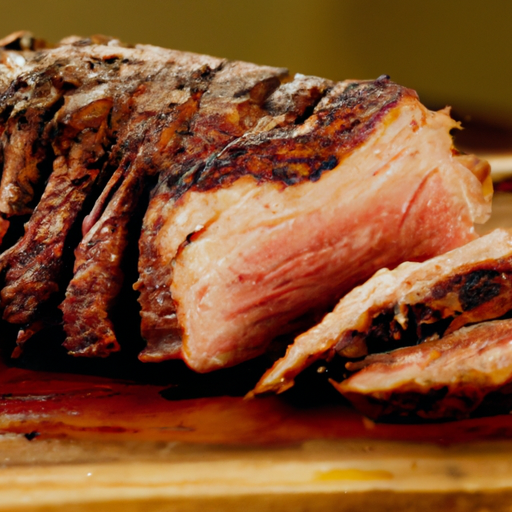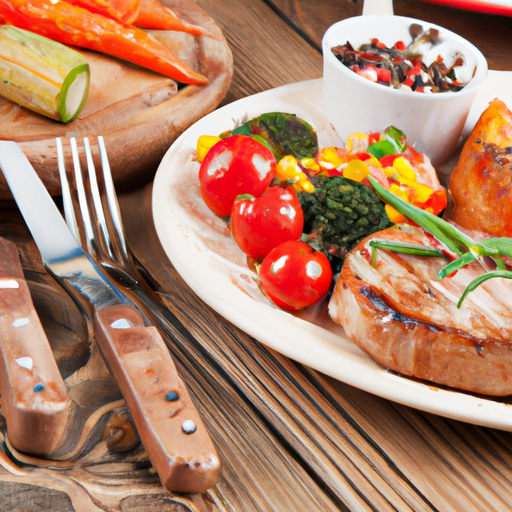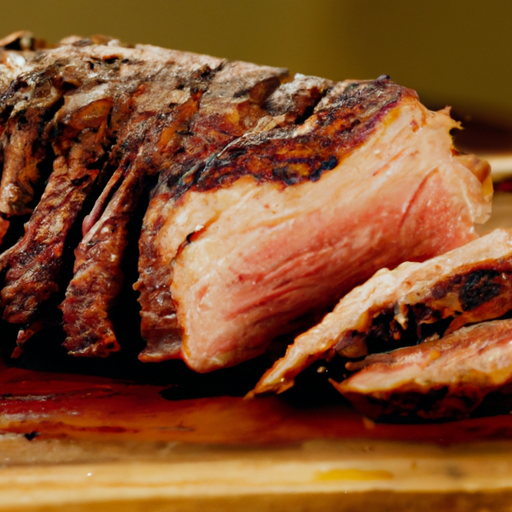If you’ve ever wanted to achieve perfectly cooked prime rib every time, look no further than “Perfect Prime Rib: Mastering the Cooking Times.” This comprehensive guide provides you with the exact cooking times needed to achieve your desired level of doneness, ensuring a succulent and tender roast every single time. Whether you prefer your prime rib rare, medium-rare, or well-done, this invaluable resource takes all the guesswork out of cooking this beloved cut of meat. Say goodbye to overcooked or undercooked prime rib and say hello to culinary perfection with “Perfect Prime Rib: Mastering the Cooking Times.”
Choosing the Prime Rib
When it comes to selecting the perfect prime rib, there are a few factors to consider. The first step is to choose the right cut. Prime rib is typically cut from the rib primal, which is located between the chuck and the loin. This area offers a good balance of marbling and tenderness, making it ideal for roasting. You can choose between bone-in or boneless prime rib, depending on your preference.
Next, it’s important to size the roast correctly. The size of the prime rib will depend on the number of guests you’re planning to serve. As a general rule, you should allow for about 1 pound of prime rib per person. However, if you want to have leftovers or if your guests have bigger appetites, you may want to consider increasing the amount.
Lastly, consider the quality and grade of the prime rib. Prime grade is the highest quality you can find, with abundant marbling throughout the meat. Choice grade is also a good option, with slightly less marbling but still great flavor. Make sure to choose a prime rib that has a good amount of fat covering it, as this will help keep the meat moist during cooking.
Preparation and Seasoning
Once you have chosen your prime rib, it’s time to prepare and season it for cooking. Before seasoning, you’ll need to trim any excess fat from the surface of the meat. Leave a thin layer of fat to help maintain moisture and enhance flavor.
To ensure even cooking and a nicely shaped roast, it’s a good idea to tie the prime rib with kitchen twine. This will help hold the roast together and prevent it from spreading out too much during cooking.
For added flavor and tenderness, consider dry aging the prime rib. Dry aging refers to the process of letting the meat sit uncovered in the refrigerator for a period of time, typically a few days to a couple of weeks. This helps to concentrate the flavors and improve the texture of the meat.
When it comes to seasoning, there are endless options to choose from. A classic combination is a simple blend of kosher salt, black pepper, and garlic powder. You can also experiment with different herbs and spices, such as rosemary, thyme, or paprika. Just be sure to generously coat the prime rib with your chosen seasoning mixture, ensuring that it covers the entire surface.

Determining Doneness
To cook the perfect prime rib, you need to know how to determine its doneness. There are a few methods you can use to gauge the internal temperature of the meat.
One popular way is to use a meat thermometer. Insert the probe into the thickest part of the prime rib, making sure it doesn’t touch the bone. The internal temperature will give you an idea of how cooked the meat is. For a medium-rare prime rib, aim for an internal temperature of about 135°F (57°C). Keep in mind that the temperature will continue to rise slightly as the meat rests.
Measuring resting time is also crucial in determining doneness. Resting allows the meat to redistribute its juices, resulting in a more flavorful and tender prime rib. As a general rule, let the roast rest for at least 15 minutes before carving. This allows the internal temperature to even out and the juices to settle back into the meat.
Oven Cooking Times
Cooking prime rib in the oven offers consistent and reliable results. There are a few different methods you can choose from.
One method is the high-temperature method. This involves preheating the oven to a high temperature, around 450°F (230°C), and then roasting the prime rib for a short amount of time to sear the exterior. After searing, you reduce the temperature and continue roasting until the desired doneness is reached.
Another option is the low-temperature method, which involves cooking the prime rib at a lower temperature, around 325°F (163°C), for a longer period of time. This slow and steady cooking method allows for more even cooking and tenderness throughout the meat.
If you’re looking for the best of both worlds, you can try the combination cooking method. This method involves starting the prime rib at a high temperature to sear the exterior, and then lowering the temperature for the remainder of the cooking time. This helps to achieve a crispy crust while maintaining a juicy and tender interior.

Grilling and Smoking Times
For those who prefer the smoky and charred flavors of grilling or smoking, prime rib can also be cooked on a grill or smoker. There are a few techniques that you can use to achieve delicious results.
The direct grilling technique involves cooking the prime rib directly over the heat source. This method is great for achieving a nice sear and crust on the exterior of the meat. Start by searing the prime rib over high heat on all sides, and then move it to a cooler part of the grill to finish cooking.
If you prefer a more indirect cooking method, the indirect grilling technique is perfect. This involves placing the prime rib next to, rather than directly over, the heat source. This allows for more even cooking and prevents the exterior from becoming too charred. Make sure to monitor the temperature of the grill and adjust accordingly to maintain a consistent cooking temperature.
For those who love the smoky flavors, smoking the prime rib is a great option. This method involves cooking the meat in a smoker at a low temperature, typically around 225°F (107°C), for an extended period of time. The slow cooking process allows the flavors to penetrate the meat and gives it a rich and smoky taste.
Roasting Time Tips
To ensure that your prime rib is cooked to perfection, it’s important to understand the roasting time. Although it may vary depending on the size and thickness of the roast, there are some general guidelines that can help.
Calculating the cooking time is essential to ensure that your prime rib is cooked to your desired level of doneness. As a rule of thumb, you can calculate about 15 minutes of cooking time per pound of prime rib. Keep in mind that this is just an estimate and the actual cooking time may differ.
Resting time is equally important as cooking time. After the prime rib is removed from the oven or grill, allow it to rest for at least 15 minutes before carving. This resting time allows the juices to redistribute and ensures a more tender and flavorful prime rib.
Using a cooking chart is a great way to keep track of the roasting time. This chart provides a guideline for cooking times based on the weight of the prime rib and desired level of doneness. By following the chart, you can have a clear idea of how long to cook your prime rib.
Achieving Perfect Medium Rare
Medium rare is often considered the ideal level of doneness for prime rib, as it offers a perfect balance of tenderness, juiciness, and flavor. To achieve the perfect medium-rare prime rib, there are a few key considerations.
Firstly, the cooking temperature is crucial. For medium rare, aim for an internal temperature of about 135°F (57°C). This temperature will result in a pink and juicy center, while still ensuring that the meat is cooked through.
Cooking time recommendations can also help you achieve medium rare. As a general guideline, you can calculate about 15 minutes of cooking time per pound for a medium-rare prime rib. However, it’s important to remember that cooking times may vary depending on the size and thickness of the roast, so it’s always best to rely on the internal temperature to determine doneness.
When checking for pinkness, you can use a meat thermometer to ensure accuracy. Insert the probe into the thickest part of the prime rib, and if the internal temperature reaches 135°F (57°C), you can be confident that your prime rib is cooked to a perfect medium rare.
Cooking Prime Rib to Other Levels of Doneness
While medium rare is a popular choice, everyone has their own preferences when it comes to doneness. If you prefer your prime rib cooked to a different level, here are some tips to achieve the desired results.
For a medium prime rib, aim for an internal temperature of about 145°F (63°C). This will result in a slightly less pink center, but the meat will still be tender and juicy.
If you prefer your prime rib cooked to medium-well, adjust the internal temperature to around 150°F (66°C). At this temperature, the meat will have a hint of pinkness in the center, but it will be more cooked and less juicy.
For those who enjoy well-done meat, cook your prime rib to an internal temperature of about 160°F (71°C) or higher. Keep in mind that cooking the meat to this level of doneness may result in a drier texture, so it’s important to be mindful of the cooking time.
Resting and Carving
After the prime rib is cooked to perfection, it’s time to let it rest and then carve it. Resting the meat is essential to ensure that it remains juicy and tender.
Post-cooking resting allows the meat’s juices to redistribute, resulting in a more evenly cooked and flavorful prime rib. Transfer the roast to a cutting board and loosely tent it with aluminum foil. Let it rest for at least 15 minutes, allowing the temperature to even out and the juices to settle back into the meat.
When it comes to carving the prime rib, it’s important to have the right technique. Start by removing the twine used to tie the roast. Then, using a sharp carving knife, slice the prime rib against the grain into thin slices. This will ensure that the meat remains tender and easy to chew.
When serving the prime rib, you can present it as a whole roast or plate it individually. Serve it with your favorite side dishes and sauces to complement the rich flavors of the meat.
Troubleshooting
Even with careful planning and preparation, there may be instances where you encounter some issues when cooking prime rib. Here are a few common problems and how to troubleshoot them.
If you find that you have overcooked your prime rib, resulting in dry meat, don’t fret. One solution is to serve it with a flavorful sauce or gravy to add moisture and enhance the taste. Alternatively, you can slice the meat thinly and serve it in sandwiches or wraps, where the added condiments will help to moisten the meat.
On the other hand, if your prime rib is undercooked, you can return it to the oven or grill for a bit longer. Keep a close eye on the internal temperature, and once it reaches your desired level of doneness, remove it from the heat and let it rest before carving.
Uneven cooking can be an issue if you have a particularly thick or irregularly shaped prime rib. To remedy this, you can try rotating the roast during cooking or using a meat thermometer to monitor different areas of the meat. This will help ensure that all parts of the prime rib are cooked evenly.
Remember, practice makes perfect, and cooking prime rib is no exception. Don’t be discouraged if your first attempt doesn’t turn out exactly as planned. With each cooking experience, you’ll learn more about your preferences and perfect your techniques.
So go ahead, choose your prime rib, prepare and season it to perfection, determine your desired doneness, and cook it using your preferred method. With these comprehensive guidelines and troubleshooting tips, you’re well on your way to mastering the art of cooking prime rib. Enjoy the process and savor the delicious results!
